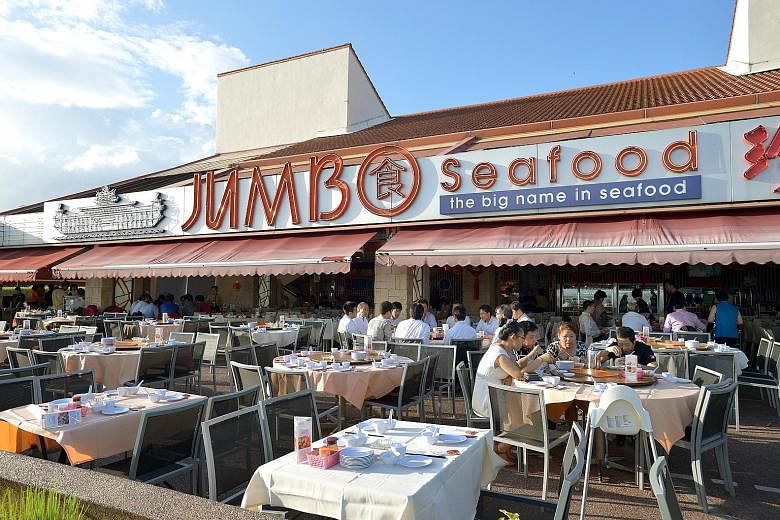One blot marred the Singapore Exchange's report card when it turned in a sterling set of quarterly results recently - a lack of decent- sized initial public offerings (IPOs).
For the period under review, seven new listings raised a mere $100 million in total, compared with 13 listings a year earlier, which raked in $1.9 billion.
Including seafood restaurant operator Jumbo Group, which announced its IPO last week, this year's IPO crop amounts to 10.
Some of the companies that went public this year included familiar names such as Soo Kee Group, which runs a well-known jewellery chain here. But all these IPOs are listed on Catalist - the junior board established seven years ago to attract small, fast-growing firms.
One other observation: Although the SGX touts itself as the "Asian Gateway", with about 40 per cent of its listings coming from outside Singapore, this year's IPO crop has featured mostly local companies.
There is also none of the biggish IPOs and real estate investment trusts (Reits), which used to take pride of place each year on the SGX's listing calendar. This year's biggest offering - Manulife US Reit - was reportedly delayed in July because of unfavourable market conditions.
But what must surely take the cake is the fact that even neighbouring Asean markets are doing considerably better on the IPO front.
Bloomberg data shows that so far this year, IPOs in Thailand had raised US$4.03 billion (S$5.6 billion), while in Malaysia, they raked in US$1.42 billion.
One problem faced by the SGX is the intensifying global war for IPOs as international brand-name IPO hopefuls are relentlessly courted by stock exchanges everywhere.
The splash of publicity that goes with landing a big-name international IPO often adds to a stock exchange's prominence globally and that may, in turn, lure other IPO hopefuls to list there.
Imagine the big boost to Singapore's standing as an international financial centre if the SGX manages to snag an Alibaba or even a Ferrari into listing here. So what more can be done to draw companies to launch their IPOs in Singapore?
Former SGX boss Magnus Bocker, for one, was convinced that the flow of IPOs would resume when a slew of reforms to overhaul the stock market took effect.
These changes included requiring mainboard-listed firms to have a minimum trading price of 20 cents and replacing with collateralised trading the current practice of brokers offering up to three days' credit to their clients to settle outstanding purchases without having to put up any cash or collateral.
His successor, Mr Loh Boon Chye, who took over about four months ago, followed up with a pledge to improve the liquidity in the stock market by expanding
the market-maker and liquidity-provider programme to stir up trading interest.
Market makers provide buy and sell quotes continuously throughout the trading day, enabling investors to trade shares easily - and if they succeed in creating a sufficiently deep and liquid market, that would also enable the SGX to attract more IPOs here when global economic conditions improve.
But are these measures sufficient to make the SGX an attractive listing destination? Eventually, they may make a difference, but in the often cut-throat IPO business, time is of the essence and the SGX must not procrastinate if it is to remain relevant.
Its rival to the north, the Hong Kong Exchange, enjoys the "gateway-to-China" privilege, prospering immensely from the H-share offerings launched by giant China firms.
Despite China's summer stock market turmoil, Hong Kong remains one of the world's largest venues for new listings, raising a total of US$22.7 billion so far this year, according to Dealogic.
In the past month alone, at least three big Chinese issuers had launched their respective offers in Hong Kong - China Reinsurance, bad debt manager China Huarong and investment bank China International Capital Corp.
Worse, the attention which Hong Kong draws may suck in Singapore-based firms which may otherwise have listed here.
On the same day SGX released its quarterly results two weeks ago, there was a news report that BOC Aviation, which had been partly owned by Singapore Airlines before it was sold to Bank of China nine years ago, was planning to list in Hong Kong.
BOC Aviation, based here, is estimated to have a market value of US$6 billion if it lists. It fits the profile of the big international companies which SGX is trying to attract and it is a pity that it has chosen Hong Kong, rather than Singapore, to go public.
To further deepen and broaden the scope of the securities market here, the SGX will need to attract companies of the stature of BOC Aviation to list here.
The SGX may want to lobby the Government to lend a helping hand by allowing national assets such as PSA and Changi Airport to be listed on the local stock exchange.
It was, after all, efforts to list a potpourri of Government-owned companies, such as Singtel and firms which later merged to form Singapore Technologies Engineering, that put Singapore on the international IPO map over two decades ago and converted a generation of Singaporeans into investors as they secured Singtel shares at a discounted price.
The Reit sector - Asia's second- biggest after Japan's with a total market value of almost $70 billion - owes its success to efforts by Temasek-linked companies such as CapitaLand and Mapletree Group to float their assets as separate listed companies on the SGX.
In this light, perhaps, the SGX can try to lobby Temasek Holdings and GIC, since their vast overseas investments are likely to feature IPO hopefuls which will give our local securities market a big shot in the arm, to consider listing these here when they finally go public.
As it is, there is no shortage of retail investor interest in stock investing if companies are worried about trading liquidity of their shares. Just last year alone, more than 71,000 new CDP accounts - used to hold SGX-listed shares - were opened. Given the paltry interest rate which investors get from bank savings accounts, many of them are on the lookout for good investment opportunities.
Plenty can be done to bring the mojo back to the SGX's IPO business. Indeed, the remedy may lie right at our doorstep.


